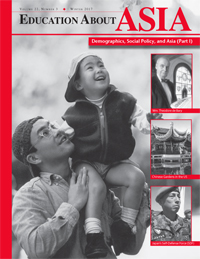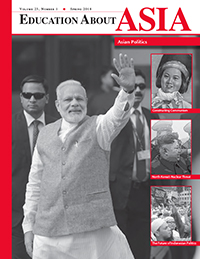Deadline for Submissions for 2023 Franklin R. Buchanan Prize: November 1, 2022
Established in 1995 by the AAS Committee on Educational Issues and Policy and the Committee on Teaching about Asia, the Franklin R. Buchanan Prize is awarded annually to recognize an outstanding pedagogical, instructional, or curriculum publication on Asia designed for K-12 and college undergraduate instructors and learners. To that end, the winning submission will reflect current scholarship as well as innovative pedagogical methodologies that emphasize student-centered learning and skill development. Submissions should enhance teaching beyond conventional textbooks, primary source readers, or collected or academic essays. The winning submission will contribute qualitatively to the available materials for teaching the specific content and make a significant impact on the intended audience. Submissions must have been published after January 1, 2021 and include well-articulated and detailed teaching strategies in order to be competitive. Any format is acceptable, including print, CD, video, and online formats. Submissions that address underrepresented regions of Asia, as defined by the Association for Asian Studies, are encouraged.
The 2023 Buchanan Prize will be awarded to the author(s) of the work at the AAS Annual Conference in Boston, Massachusetts on March 16-19, 2023. The prize includes a $1,000 monetary award and a one-year membership to AAS.
Submissions are due November 1, 2022.For more information and a submission form, please contact the Chair of the Committee, Kristi Roundtree at barnesk@u.washington.edu
How Education About Asia Gave Me a Wonderful Opportunity, by Matthew A. Kosuta
In April 2022, while I was living and working in Thailand, I was contacted by the United Nations Population Fund (UNFPA) Asia-Pacific to present a talk at their “Asia and the Pacific Regional Leadership Meeting 2022” (RLM) held May 9-13, 2022 in Bangkok (a regional headquarters for the UNFPA Asia-Pacific). I was invited because the Deputy Regional Director for UNFPA Asia-Pacific had read an article I published in Education About Asia titled “Postcolonial Religious Conflict in Southeast Asia”. The article laid the historical background and then surveyed the religious tensions and intermittent religious conflict in Southeast Asia during decolonization up to the present.
This topic is obviously not within the mandate of the UNFPA Asia-Pacific which deals with women’s rights, reproductive rights, children, and such. However, the Deputy Regional Director thought that because the mandate of the UNFPA Asia-Pacific brings the representatives into contact and even contestation with the religions of Asia that it would be beneficial to give UNFPA Asia-Pacific representatives an opportunity to think outside the box by having a talk on religion in relation to conflict and war.
Being invited was quite an honor because participating in this Asian regional meeting were UNFPA Asia-Pacific senior management, selected HQ staff, heads of offices, deputy and assistant representatives, operations managers, and finally regional staff, totaling approximately 100 people from 20 countries in Asia.
After two Zoom preparatory interviews, first with a Thailand-based regional representative, and then with this same representative and the Deputy Regional Director, both my suitability to give the talk and the subject of the talk were settled. The talk would be on “Religion, Conflict and Violence – What can be learned from Asia?” And so, on May 12, 2022, I spoke for forty-five minutes on contemporary international human rights law in relation to conflict, ethics of war of the major world religions, as well as conquests in the name of religions. I ended on an optimistic note outlining the necessary requisites for the culture of peace that has existed between the liberal democracies of the world. A full 45-minute Q&A session followed in which the audience was quite engaged. For me, the entire session was a joy.
I owe that wonderful opportunity to showcase my academic specialization to a highly reputable international organization to that one article I published in Education About Asia several years ago; proof to me that Education About Asia is widely read and has a real-world impact.







